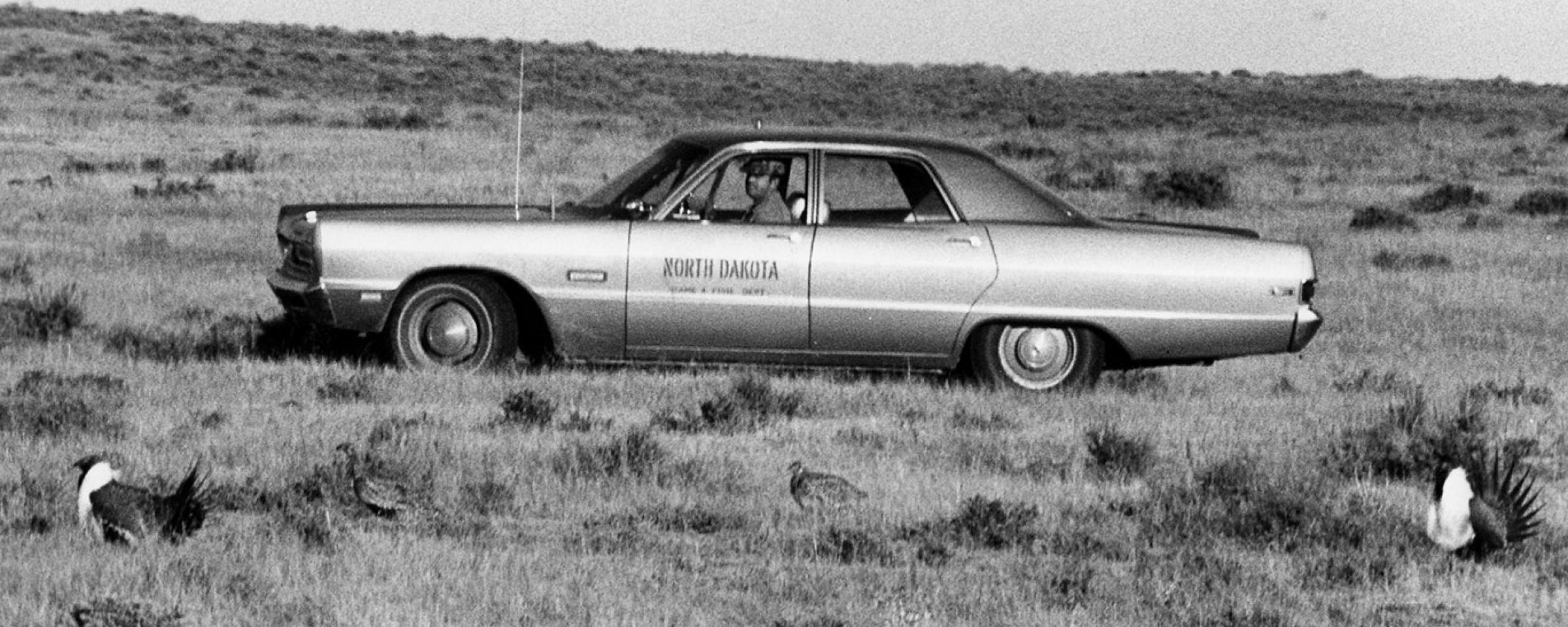
A Look Back
State Game and Fish Department personnel have been counting strutting male sage grouse in southwestern North Dakota for more than 65 years.
The counts were typically made in April, but at times in May. Birds were counted from the ground, and in the air from airplanes, or sometimes both.
While the birds have gathered uninterrupted on leks for seemingly forever, bad weather, hazardous roads, lack of personnel and other hurdles have kept wildlife biologists away some years.
The first sage grouse count was in 1951. That year, 367 males were counted on 11 active leks. In 1953 on 18 active grounds, 542 birds were counted, which still stands as the most ever tallied in North Dakota.
The above black and white photograph of a Game and Fish Department biologist parked very near strutting male sage grouse was probably taken sometime in the late 1960s or early 1970s.
In North Dakota, sage grouse are on the eastern edge of their range. Their numbers have been up and down over the years. Since biologists started monitoring them in spring on leks in 1951, their numbers today have never been lower.
The reality that sage grouse in southwestern North Dakota are on their edge of their range, where sagebrush habitat requirements aren’t as flush as some Western states, has never been lost on those individuals who managed them.
“Sage grouse in North Dakota are a minor species as far as hunters are concerned. The population is small, season length short, and bag limit only one per day,” according to the January 1972 issue of North Dakota OUTDOORS.
Even so, despite rollercoaster numbers over the years, the sage grouse belong in southwestern North Dakota.
“Some living creatures seem, in a special way, to be a part of the land they live in … It is that way with the sage grouse,” according to the February 1966 issue of North Dakota OUTDOORS. “And for us, the sagebrush too suffers a certain deadness unless we, from time to time, can glimpse a sage grouse crossing the road or calmly pecking around in an exposed patch in the brushland. Even merely knowing that they are there, helps give a secure feeling that, although the sagebrush may look forbidding and dry, it harbors a living soul within.”
